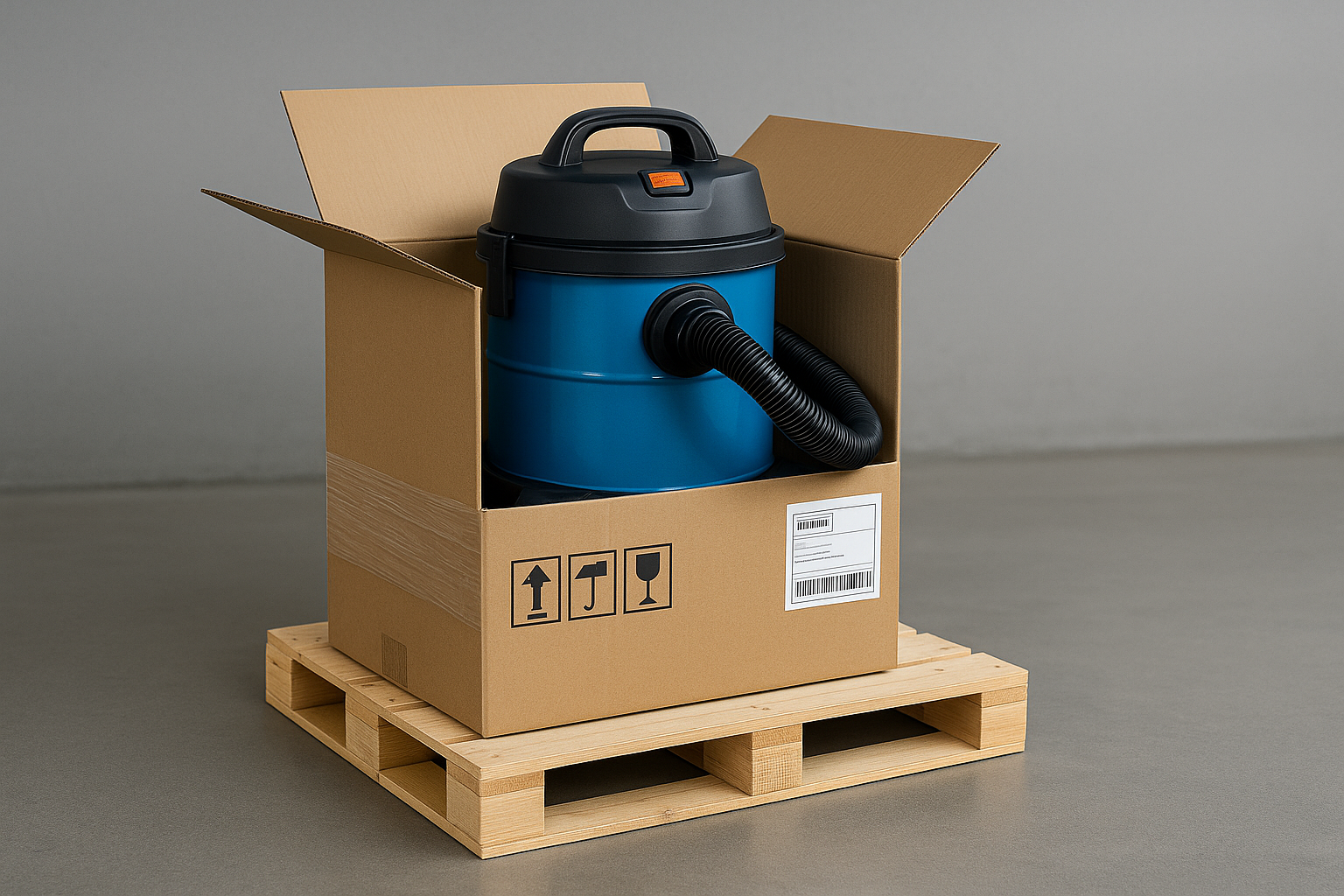Why Shipping Matters in the Vacuum Cleaner Supply Chain
For international buyers and distributors, the journey from factory floor to warehouse shelf is just as important as the vacuum cleaner itself. A single misstep in packaging, labeling, or customs documentation can delay delivery, increase costs, or even damage reputation. That’s why understanding the details of vacuum cleaner shipping is crucial for every B2B stakeholder.
Shipping vacuum cleaners is not only about logistics—it’s about compliance, safety, and cost optimization. From managing battery regulations to preventing damage in transit, small details make a big difference.
Packaging, Handling, and Transportation Risks
Vacuum cleaners, particularly models like Cordless Vacuum Cleaner and Li-ion Cordless Handheld Vacuum Cleaner, often include lithium-ion batteries. These are regulated as dangerous goods in many regions. Improper declaration may lead to hefty fines or outright rejection by carriers.
To ensure safe passage, suppliers should use certified packaging materials, provide clear battery labels, and prepare MSDS (Material Safety Data Sheets) when needed. For Wet Dry Vacuum Cleaners and larger industrial units, reinforced cartons and shock-absorbing materials reduce breakage risk during sea freight.
One growing trend is the use of cordless handheld vacuums in B2B orders. These products are lighter but still need extra precautions against humidity and stacking pressure. Meanwhile, distributors targeting automotive sectors often request Car Vacuum Cleaner shipments to include anti-scratch protective wrapping.
According to IATA lithium battery guidance, compliance is non-negotiable. Buyers who ignore this often face delays or additional inspections.
Customs and Documentation Challenges
Even before customs clearance, many ports now require digital pre-submission of shipment data. Missing details—like HS codes or specific product descriptions—can hold back entire containers. This is particularly sensitive for multipurpose units such as the 4 in 1 Cordless Smart Wet & Dry Vacuum Cleaner, which may be classified differently depending on the jurisdiction.
Suppliers are also advised to provide noise-level and energy-efficiency certifications when exporting to Europe, where regulations on quiet vacuum cleaner standards are strict. Inconsistent paperwork here is one of the leading causes of shipment rejection.
For U.S. importers, labeling accuracy is key. Mislabeling a wet dry vacuum as a standard appliance may result in penalties. Working closely with freight forwarders who understand these nuances helps reduce compliance risks.
A recent U.S. Customs advisory underscores the importance of accurate manifests and pre-declaration, especially for products with electrical components.
Selling Compliance as a Value Proposition
It’s not enough to ship efficiently; smart suppliers now market their compliance as part of their brand value. Promoting strong logistics management reassures B2B buyers that deliveries will be on time and trouble-free.
This is particularly important when discussing advanced models that combine multiple features. Buyers are more likely to trust suppliers that guarantee their products arrive intact—especially if the machine is a high suction portable unit that runs quietly while self-cleaning, offers multi-functional durability, operates fast yet remains lightweight, conserves energy while delivering efficient and powerful results, and ships as a large-capacity wet dry vacuum cleaner.
Suppliers who educate customers on these logistics details often win repeat orders. After all, a vacuum cleaner that arrives late or damaged isn’t just a product failure—it’s a supply chain failure.
Conclusion
Shipping is more than moving boxes; it’s about managing risk, demonstrating professionalism, and earning trust. From lithium battery safety to customs compliance, mastering these details ensures smooth global trade in the competitive vacuum cleaner market.
Visit us at www.lxvacuum.com

















